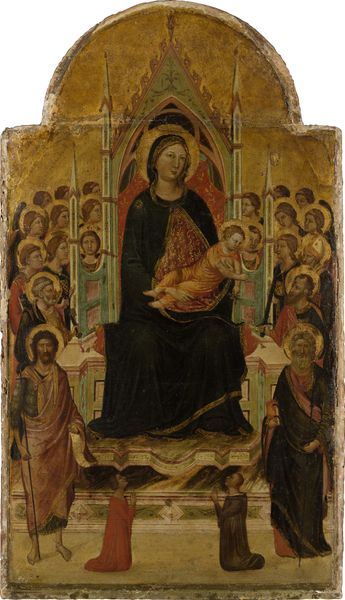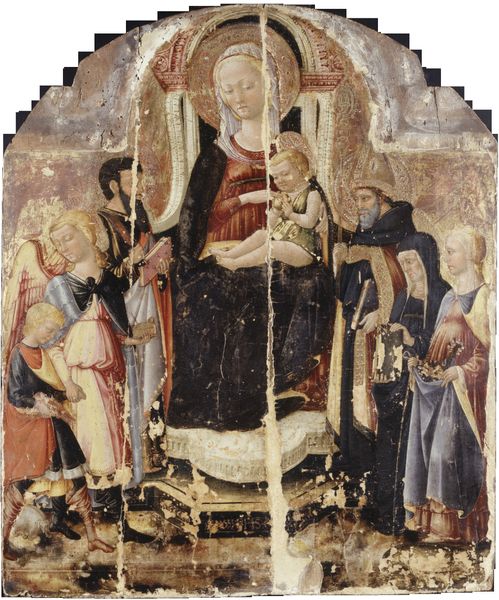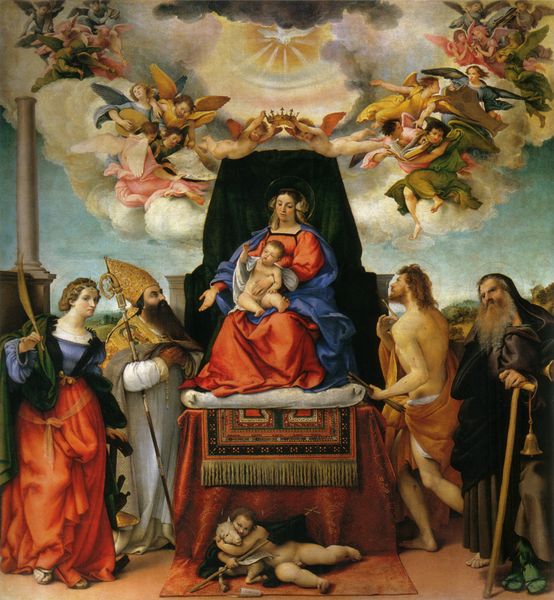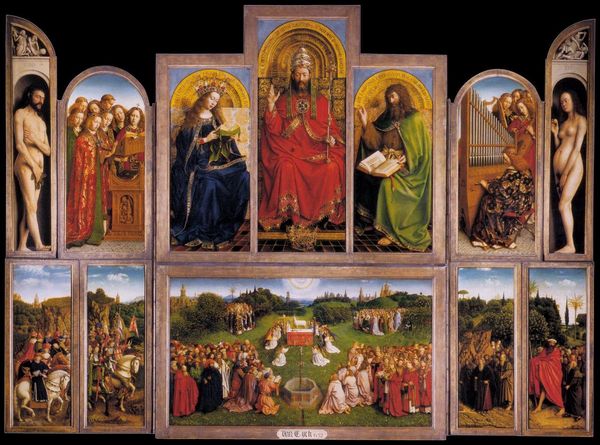
Triptych of Earthly Vanity and Divine Salvation 1485
0:00
0:00
hansmemling
Musée des Beaux-Arts de Strasbourg, Strasbourg, France
panel, painting, oil-paint
#
panel
#
allegory
#
painting
#
oil-paint
#
vanitas
#
history-painting
#
northern-renaissance
#
early-renaissance
Copyright: Public domain
Editor: Here we have Hans Memling’s “Triptych of Earthly Vanity and Divine Salvation,” an oil on panel from 1485. It's quite striking—the juxtaposition of the detailed skull with the regal central panel is particularly thought-provoking. How do you approach an artwork like this? Curator: From a formalist perspective, the structure itself dictates much of our understanding. Observe the stark contrast in palette: the somber tones of the wings versus the vibrant reds and golds in the central panel. This creates a visual hierarchy, drawing our eye to the central figure. What compositional elements strike you? Editor: The central figure seems to be framed by the other figures around him; their gaze directs you there immediately. What about the lettering inscribed? Is this included into your analysis? Curator: Precisely. The text acts as another compositional layer, almost as an "overlay". How does this contribute to the overall design of the work? Editor: It creates a strong, dark border which both frames the skull while further darkening its inherent morbidity, making the contrast with the central panel all the more intense. Curator: A valid point. Note the materiality of the panel and oil paint; consider the texture achieved, and the evident skill of Memling in rendering these details. These elements contribute to the overall impact of the work, transcending simple representation. Editor: I see what you mean; the formal qualities act as a lens through which we understand the thematic concerns. Curator: Precisely, the construction is inextricable from the conceptual message. Through close visual reading, one can interpret the complexities imbedded in Memling’s artifice and approach to the symbolic matter of redemption through earthly vanities. Editor: It’s amazing how much can be understood by just observing the forms and composition!
Comments
No comments
Be the first to comment and join the conversation on the ultimate creative platform.













